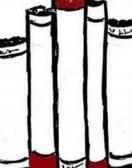This book was a Christmas present from The Bookworm, so it hasn’t been on the Landing Book Shelves for long. In fact, it is more of a bedside table guest, before taking up its final place as a bona fide Landing resident. I had never before heard of the author and illustrator Chiang Yee (1903-77), or his nom de plume The Silent Traveller, so it was a new discovery as well as a lovely Edinburgh souvenir. The color plates of the watercolour views of Edinburgh are of very good quality, beautifully reproduced and certainly make me long to visit the city again.
My copy of the The Silent Traveller in Edinburgh, according to a pencilled note inside the cover is a first edition (1948) with no name of any previous owner inscribed. It is without dust jacket, pale yellow cloth bound, in very nice condition, though my photograph probably doesn’t do it justice. I will just digress here to mention that I recently read Martin Latham’s The Bookseller’s Tale, which has a chapter called ‘Signs of Use’. Here, he talks about the various ways in which readers down the centuries have engaged with texts, writing in notes and comments. One thing I always look for in a second -hand book is the name of a previous owner or a dedication from the giver, perhaps; however, not in this case.
The first Silent Traveller book was published in 1936, when Chiang Yee brought out his book on the Lakelands, followed by London in 1938 and several more in the following years. The ‘Silent Traveller’ image was his own styling. He comments in his engaging ‘Unnecessary Introduction’ that, ‘It is perfectly natural to be silent when traveling alone’. But he went on to explain that the name originated with his Chinese pen name Ya-Hsin-Chê, which means Dumb-Walking-Man. He said that he chose this name for himself after spending several years as a civil servant and politician, which involved ‘talking night and day for five years or so’. However, I was amused to note that The Silent Traveller also mentions a Birmingham editor who once called him the ‘The Not-Too-Silent-Traveller’ so he obviously wasn’t averse to a chat at times.
- The Scott Monument, Edinburgh
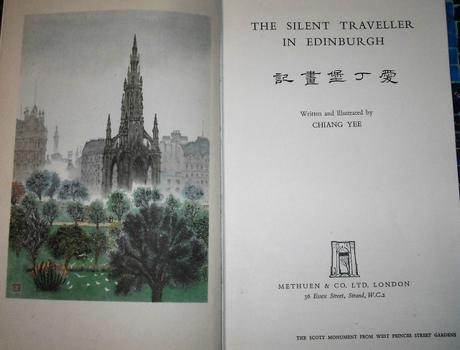
- Cloth hardback cover of The Silent Traveller
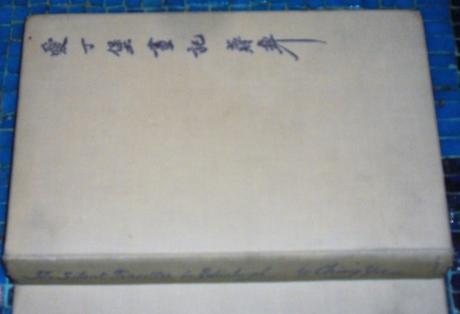
- Royal Botanic Gardens,Edinburgh
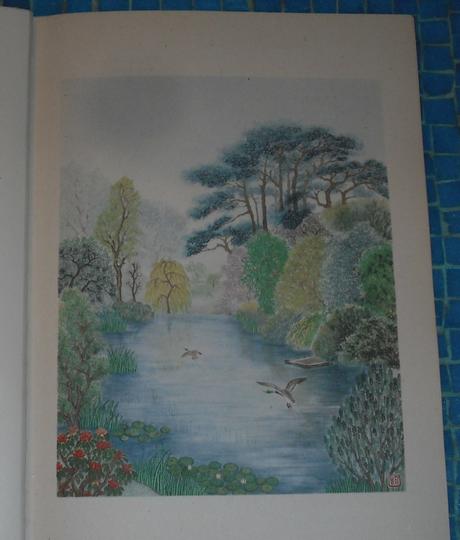
- Painting of St Anthony’s Chapel & St Margaret’s Loch
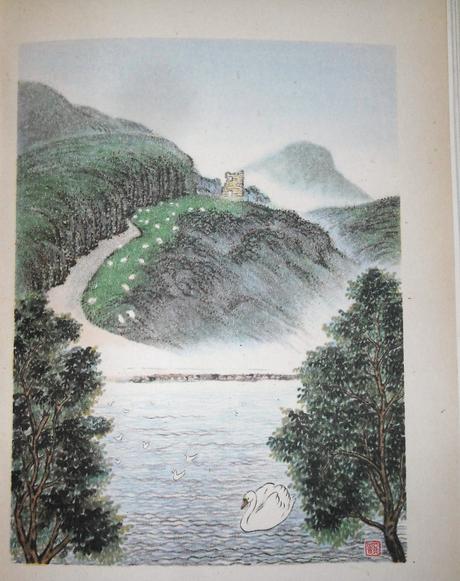
- Lady Stair’s House
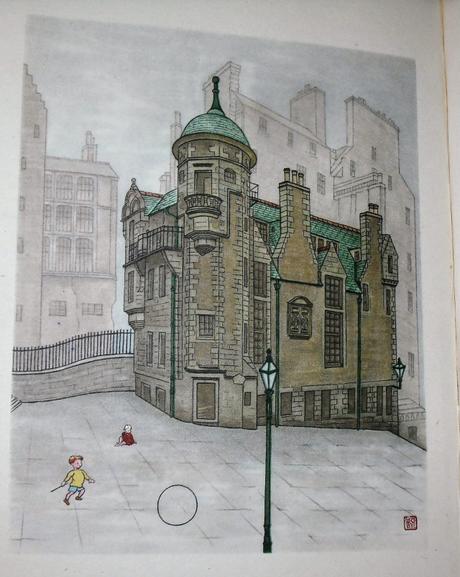
- Painting of Edinburgh Castle
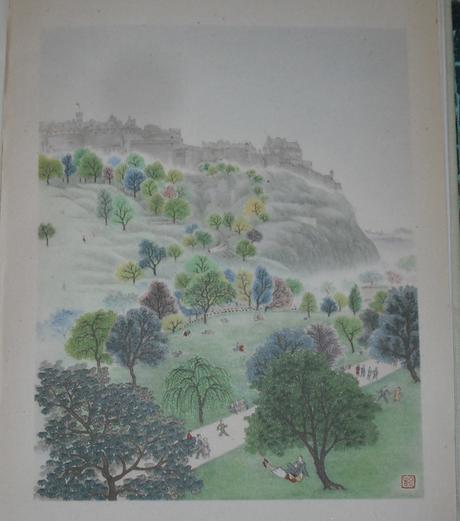
The author was an artist, poet, writer and calligrapher from a city called Juijiang (written Kiukiang at the time) on the banks of the Yangtze in Jiangxi province. By the time that his Edinburgh book was published, he had lived in Britain for several years, having left China to study in London in 1933. This book is based on a few visits Chiang Yee made to Edinburgh, the first being in 1937, then 1943 and 1944.
The Silent Traveller records his walks around the city, describing his impressions of parks, monuments and buildings. He delights in the effect of the weather and different lights on Edinburgh’s notable features with an artist’s sensibility. One thing that features very frequently in his walks is (perhaps not surprisingly) the rain. It seems that The Silent Traveller must have frequently been ‘The Wet Traveller’, but that never diminished his enthusiasm or curiosity for Edinburgh’s beauty or its history. At one point he remarks that, ‘My affection for rain increases each time I behold a familiar scene take on a new and enchanting aspect through a veil of rain’.
Alongside describing visits to Arthur’s Seat, Edinburgh Castle, the Royal Botanic Gardens and so on, Chiang Yee discusses art, literature, philosophy and poetry from China and the West. He quotes verses from Chinese poets and includes a few short pieces of his own, inspired by a particular location. He also talks about the differences and similarities between Western and Chinese art; of materials, techinique and perspective. As he points out, ‘It [watercolour] is a point in common between our two countries’ going on to say that ‘Art is an international language which, unlike a spoken language can be understood by all peoples’.
Chiang Yee’s black and white sketches and his watercolour paintings of Edinburgh illustrate the larger tourist sites and beauty spots; also, odd corners and small incidents that he recalls. I look forward to being able to take it with me on a walk around the city and compare his views of the city with present day Edinburgh. And I definitely plan to track down a couple more volumes in this series, particularly his Dublin book. Chiang Yee also wrote several other books including children’s books and works on calligraphy and art. A biography came out in 2010, written by Da Zheng: The Silent Traveller from the East-A Cultural Biography (Rutgers University Press). I was delighted to discover that Chiang Yee has had the honor of a Blue Plaque on his former home in Oxford, where he lived from 1940-55. Something to look out for on a future visit.
I’d love to hear from anyone who has come across The Silent Traveller series, if so do drop me a line.
